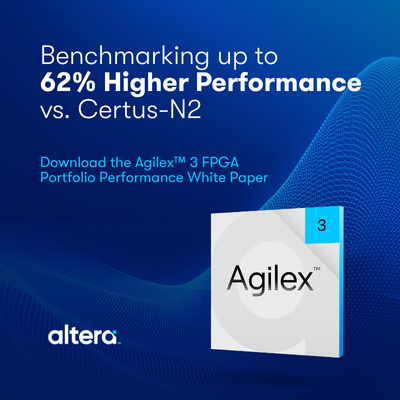Big Mess o’ Wires compared Xilinx and Altera’s FPGA tools:
I used to believe that Altera’s FPGA tools were much more hobbyist-friendly than the comparable Xilinx tools, and I frequently bashed the Xilinx tools whenever the topic came up. But after giving them a head-to-head comparison recently, I think I may have to eat my words. The truth is they’re both pretty rough and clunky, and difficult for a beginner to get the hang of, but the Xilinx tools are definitely superior in some important areas.





What? No comments on this? I’m throwing down. Hey, readers – Which tools do you all like better for hobby-like applications? Don’t limit yourselves to Xilinx and Altera.
Well I used Xilinx for Spartan-3 and honestly I had a lot of difficulty getting on with xilinx tools… to be more precise,, their documentation/user manuals suck in a way there is lot of textual description..but no pictorial explanation of how to use them…
now I have been using Altera Quartus for like 8 months and I’m perfectly happy with that…
Altera Quartus indeed is easy, clear to understand and its like whole flow of tools linked with each other..
so if you are designing your FPGA , you do get what are you making while using quartus…
my favorite tool in Quartus is ”Block design” and ” altera PLL’s” ..they just make it simple for me ….
seriously , if you now look over internet, Altera’s marketing is awesome ..I do see that Terasic technologies is doing wonderful job in making altera’s product user-friendly. =)
Tool usability and flow are important criteria for hobbyists, but cost is king. No one will pay several thousands of dollars for an EDK or SDK just to tinker around. In this case, Altera provides more tool-power for less money.
Altera gives users access to their entire software suite, which includes their system builder and SDK, as long as the user is targeting the Cyclone series and the lowest Arria II GX model–this includes most of the newest Cyclone V models, except for the highest densities. The cyclone supports gigabit transceivers, a few hundred DSP blocks, embedded logic analyzer (Signaltap) and hard-core ARM processors. Their IP, including the NIOS soft-core processor, have to be purchased separately. But I do know the NIOS can be had for as low as $500.
As far as I know, Xilinx only offers their logic edition of ISE, which doesn’t include Chipscope or any of their EDK/SDK tool chains. Their web edition also only targets their lower-end FPGAs, similar to Altera.
I’m not an Altera rep. in any way and I’m not trying to push their products. But I’ve done some research I think they have a competitive advantage over Xilinx for hobbyists and independent consultants that want to save on tool costs.
I have used Xilinx ISE on a couple of small projects. It is unwieldy, but you can make it work. I had used Altera in the distant past. It was OK then, but I have not tried it to date.
Xilinx and Altera seem to be focused on building million gate/dozens of FPGA systems. I guess that is where the money used to be. The tools have features (and messages) without end for the simplest projects. The distance between the old style PLD tools (PALASM, anyone?) and these FPGA tools is truly astronomical. It is like the difference between full blown Autocad for designing a 777 and Visio.
I have been looking wistfully at Lattice and their Diamond tools. Lattice has some nice FPGA and CPLD parts that compare to the Big Two. Question: How do Lattice’s tools compare to the other tools in terms of usability for hobby and one-off projects? Anyone?